Gunther's Cans & Matching Trays
This month I just want to show off some trays I just picked up and their matching cans. They're all from Gunther Brewing in Baltimore. I discussed Gunther three times before: February 2004, October 2006 and March 2009 as well as some of Gunther's radio shows.
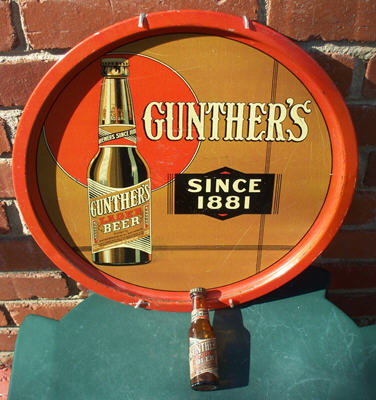 |
A mid 1930s tray. I don't have the can from 1935 as it's very rare, but I do have a small souvenir bottle from the same period. |
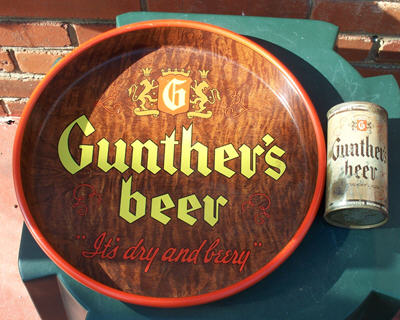 |
This tray and the can are circa 1940. This label has the "split R" which the brewery dropped in the early 1940s or so. |
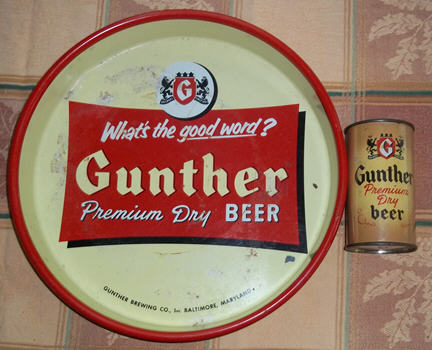 |
This tray and can were used from about 1952 until 1955. Thanks to Steve for the tray! |
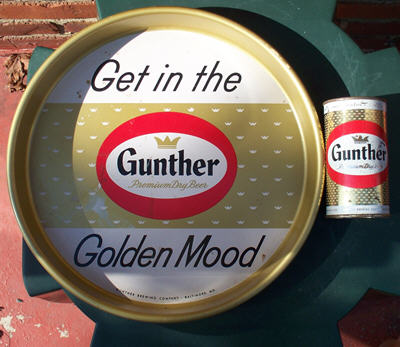 |
This tray and can were used from 1955 until the brewery closed in 1960, and again briefly from 1963-1965. You can see my October 2006 COM for the full details. |
Breweries and Beer Trays
Trays were used by breweries as a form of advertising since well before national Prohibition began in 1920. Advertising aimed at the consumer at the place where they purchases the product is called Point of Sale (POS) advertising. POS ads may include trays, signs, neons, clocks, prints, mirrors, banners, almost anything that can carry the brand or brewery name.
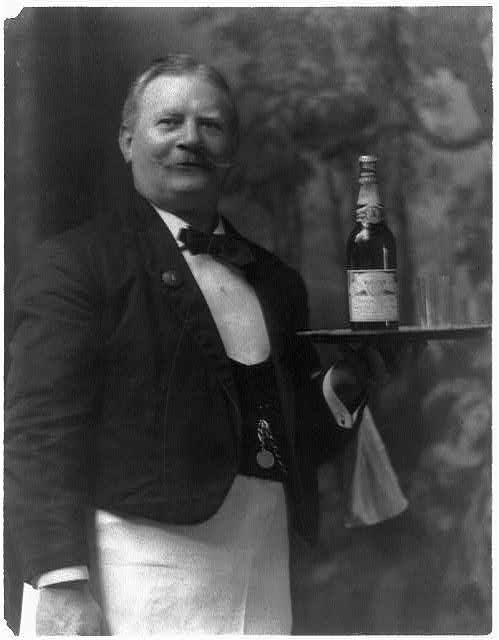 |
Before 1920 it was common for saloons to be "tied," that is, they only served one brewery's products. Setting up a saloon could be expensive, depending on location and how nice, or "respectable" the place was to look. A basement dive in an urban slum might only require some barrels, boards to set across the barrels to make a makeshift table, and old cups or tins to serve the product. In contrast, an upscale establishment in a wealthy business part of town would need expensive furniture, mirrors, lights, paintings, etc. Breweries would give loans to new saloon owners to set them up in business. These loans could range from underwriting the entire business, to providing some furnishings and decorations. In exchange, the saloon would only sell that brewery's brands while paying off the loan. In these cases a brewery tray might be included a part of the advertising and decorations. In non-tied saloons, which were usually freer to chose which products to sell, advertising was even more important because the customer might be able to chose a rival's product over yours. In these cases breweries would often give away things such as trays, signs, etc. Giving a saloon some trays and a sign or two cost the brewery a few dollars, but it was considered an acceptable adverting cost. better to give away $10.00 worth of material than to have potential customers see your rivals' name in the bar instead of yours. After Prohibition ended in 1933 "tied" bars were usually illegal and so POS advertising became even more important. However, different states had different laws regarding advertising which meant breweries needed to have different types of advertising available. For example, in 1953 North Carolina outlawed most types of Point of Sale ads, including trays. Brewers had to find other ways to get their names before the public. |
| Waiter with tray, circa 1900. Library of Congress, LC-USZ62-55350 |
Interested in Gunther Brewing?
Check out my other pages:
Gunther Racetrack Can (1955-1960)
Sources
"North Carolina Bans Point-of-Sale Advertising; Other State Developments" Modern Brewery Age (July 1953)
"Sane Advertising Perspective Needed" Brewers Journal (November 15, 1938)
Tom Jones Parry. "Put A Point in Your Point-of-Sales Advertising" Modern Brewery Age (August 1941)
Trayman.net (highly recommended)
